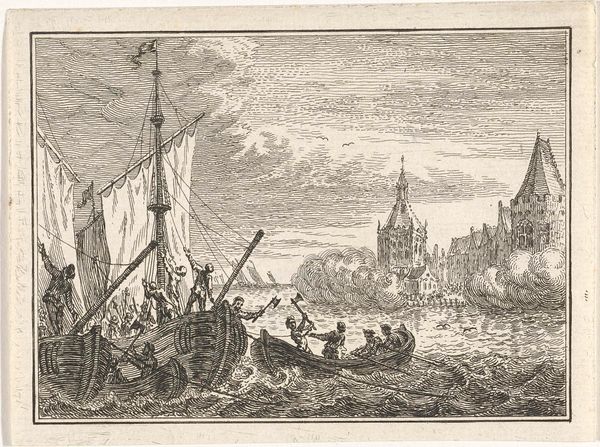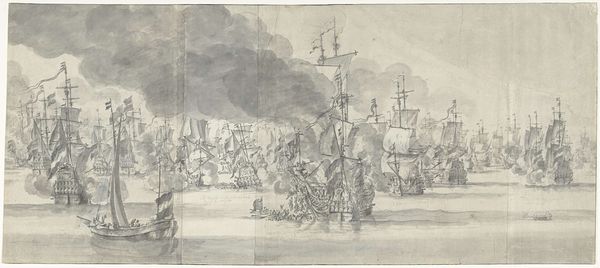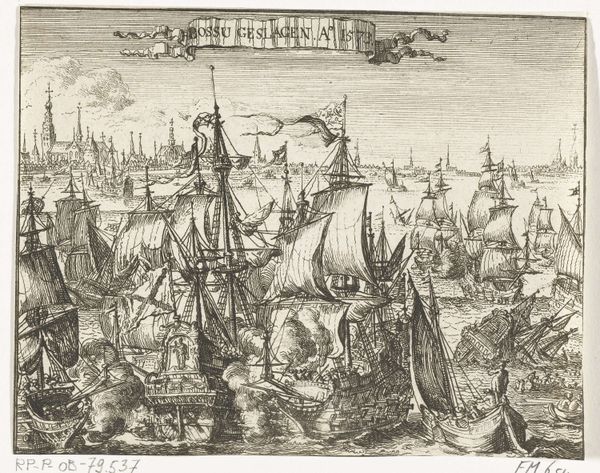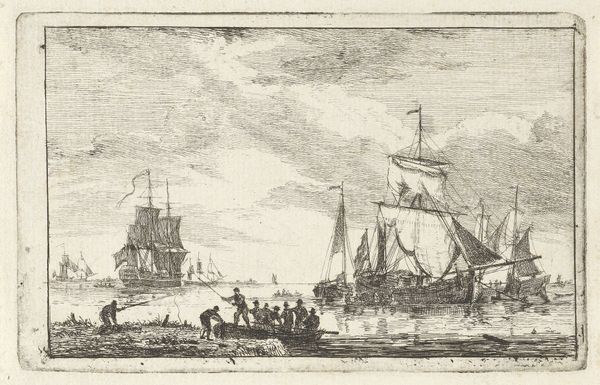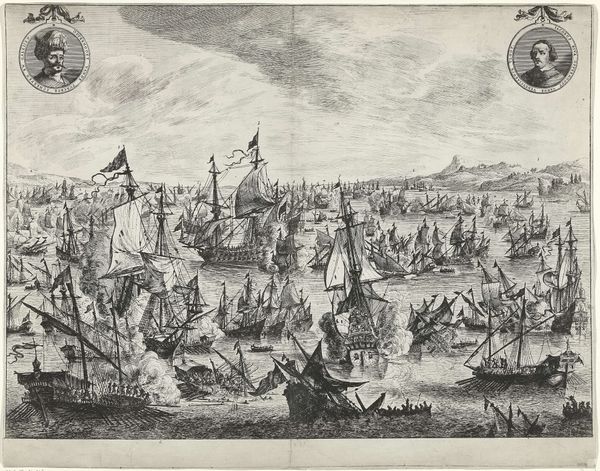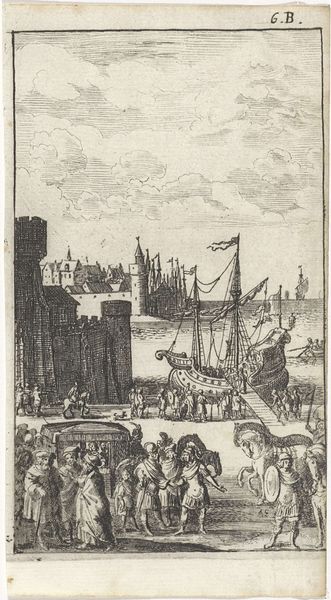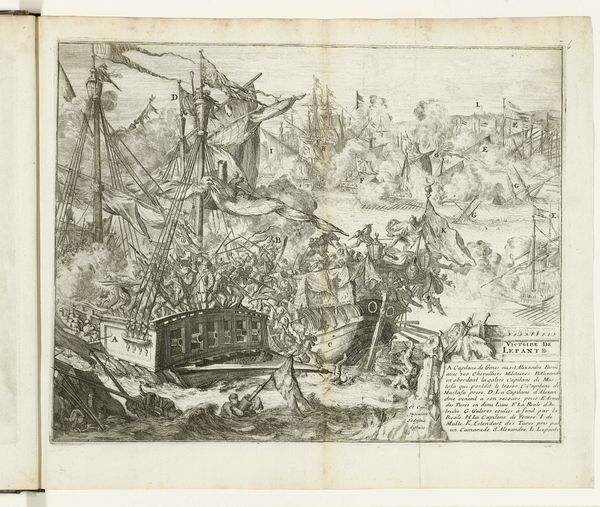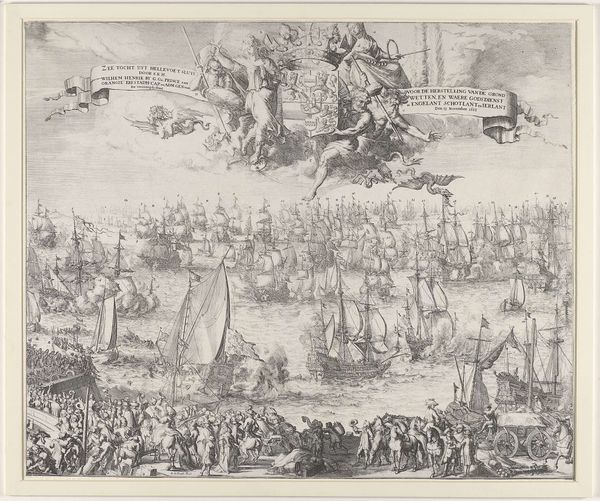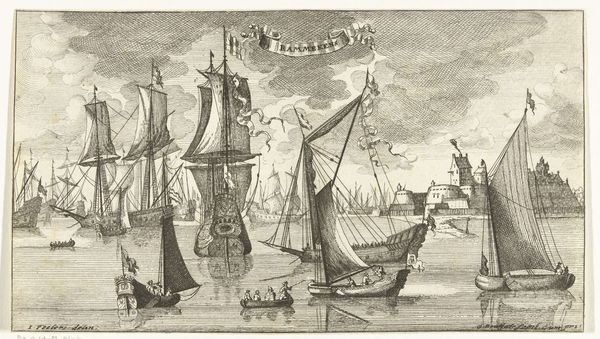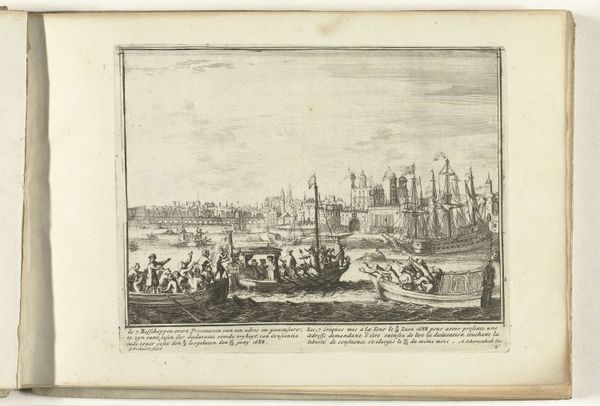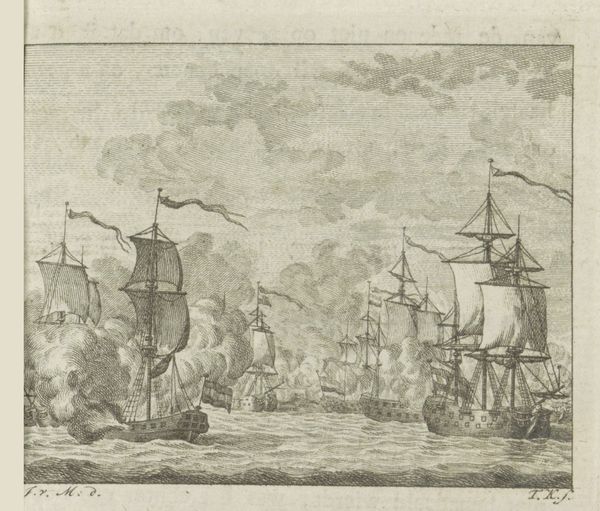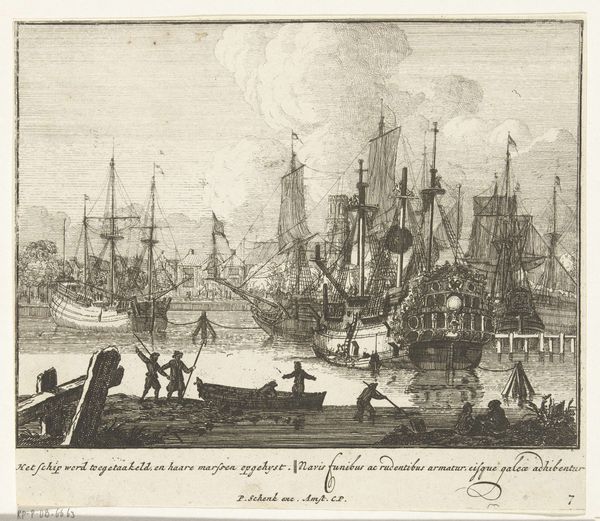
print, etching, engraving
#
baroque
# print
#
etching
#
landscape
#
cityscape
#
history-painting
#
engraving
Dimensions: height 259 mm, width 305 mm
Copyright: Rijks Museum: Open Domain
Curator: Looking at this engraving, I'm immediately struck by the churning sea and the sheer chaos of the figures scrambling onto that ship. It feels desperate. Editor: Indeed. Here we have Hugo Allard’s "The Flight of James After His Defeat at the Boyne," created in 1691. The work captures King James II’s hasty retreat to Waterford following his defeat. Allard employed both etching and engraving techniques in this print, showcasing a history-painting in landscape format. Curator: It's the drama that gets me. You can almost feel the cold spray of the water and hear the shouting. There’s something rather pathetic, don’t you think, about seeing a King reduced to this? Editor: Certainly, pathos is present. Notice how Allard uses contrasting light and shadow to heighten the emotional impact. The crowded figures juxtaposed against the vast, indifferent sea… it speaks to a very human vulnerability amid historical upheaval. Semiotically, the ship itself becomes a signifier of both escape and the loss of power. The etching captures the historical turning point as James’s ambitions are dissolving and disappearing over the horizon. Curator: Right, it's like history holding a mirror up to humanity, and all we see is wet hair and wild eyes. You’ve got this wonderfully grand, imposing vessel, but its literally teeming with little anxious figures running around and clinging on for dear life! Editor: I’d say the strength here is in the dynamism created through the detailed linear work; that nervous energy. We get sweeping diagonal movements guiding the eye across the whole composition. But there's something slightly performative in Allard’s hand, something theatrical. After all, it is a recreation from just a year later. A rendering or staging. The work feels simultaneously immediate and mediated. Curator: Hmm, mediated desperation! Nicely put. For me, there’s still that echo of human fallibility. In our own flight from one thing or another… But more generally, I just hope someone eventually dried off and had a hot toddy! Editor: A pertinent reminder that even within formal structures of art, emotional truth finds its way. It gives the piece warmth beyond a cold, clinical reading, while the semiotic structures continue to add analytical depth to such prints.
Comments
No comments
Be the first to comment and join the conversation on the ultimate creative platform.
